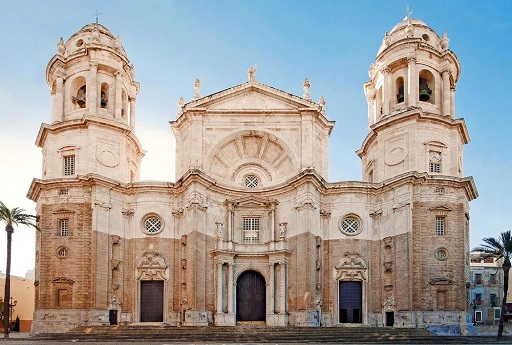
Catedral de Cádiz – Catedral de la Santa Cruz
The Holy and Apostolic Cathedral Church of Cádiz is the episcopal seat of the diocese of Cádiz, Baroque and neoclassical style, it began to be built in 1722 but it wasn't until 1838 when they finished their works, due to economic crises. This cathedral is called "Santa Cruz sobre el Mar" or "Santa Cruz sobre las Aguas", Although the people of Cádiz call it the New Cathedral and it is located in the historic center of Cádiz, almost at the edge of the sea.
Among its most characteristic parts, highlights the Clock Tower, which you can climb to appreciate one of the best views of the entire city, besides the Atlantic Ocean. The Stalls and Choir also stand out, the chapels, the Crypt, and the Sacristy.
Direction: Plaza Catedral s / n
Schedule: we recommend visiting this link to check schedules * www.catedraldecadiz.com
Phone: 956 286 154 / 956 286 620
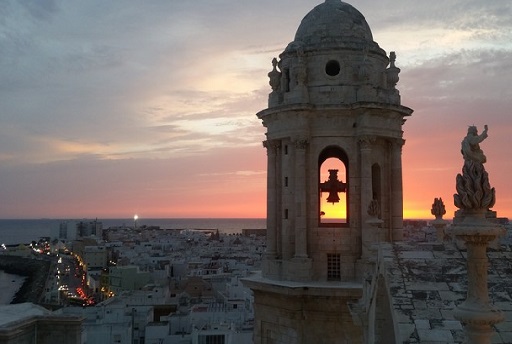
clock tower (Cádiz Cathedral)
The Clock Tower of the Cathedral of Cádiz is, for sure, one of the most characteristic elements, since from its towers you can get spectacular views of the entire city and the Atlantic Ocean. It has a neoclassical structure, fruit of the time in which it was built, coinciding with the golden period of Cádiz, thanks to trade with America. Nevertheless, until the middle of the 19th century it did not have a clock, from which it takes its name, made by José Miguel de Zugasti, considered one of the oldest watches in Spain.
Direction: Plaza Catedral s / n
Schedule: we recommend visiting this link to check schedules * www.catedraldecadiz.com
Phone: 956 286 154 / 956 286 620
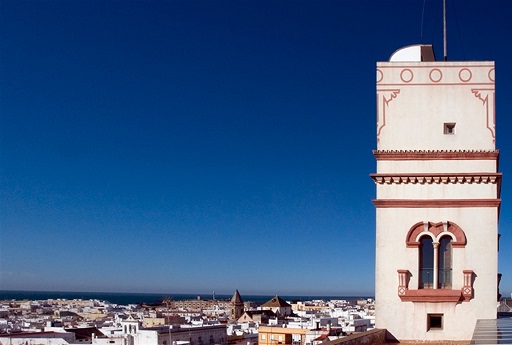
Tavira Tower
Cádiz is known for its lookout towers, Witnesses to the commerce and prosperity that the city enjoyed in the 18th century. Specific, the Tavira Tower, It was designated as the official watchtower of the port of Cádiz, for being the highest coast of the city located in the old town a 45 meters above sea level. It currently houses the Camera Obscura, It is one of the most symbolic tourist attractions in Cádiz.
Direction: Marqués del Real Tesoro Street 10
Schedule: Monday to Sunday from 10.00 a 18.00 h.
Phone: 956 212 910
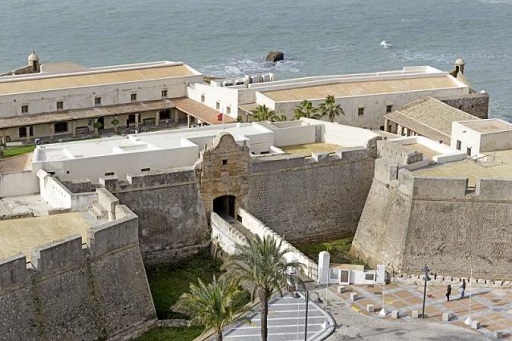
Castle of Santa Catalina
The Castle of Santa Catalina is a fortification located in the Caleta that juts into the sea thanks to some breakwaters. It was built at the end of the 16th century following the plans of the engineer Cristóbal de Rojas. It is currently used as a cultural and recreational space, in addition to holding concerts, summer activities, or film festivals like Alcances.
Direction: Campo de las Balas street s / n
Schedule: Monday to Sunday from 11.00 a 19.00 h.
Phone: 956 226 333
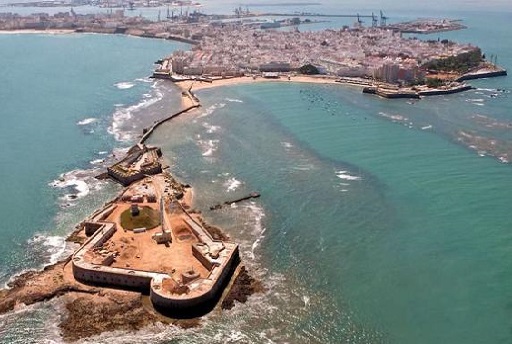
Castle of San Sebastián
The Castillo de San Sebastián is a fortress in the city of Cádiz, located at one end of La Caleta beach, on a small islet. At present it works as an exhibition space, concert celebration, or other recreational events abroad. What's more, inside there is a Marine Research Laboratory of the University of Cádiz.
Direction: Paseo Fernando Quiñones s / n
Schedule: Monday to Sunday from 9.30 a 17.00 h.
Phone: 956 241 001
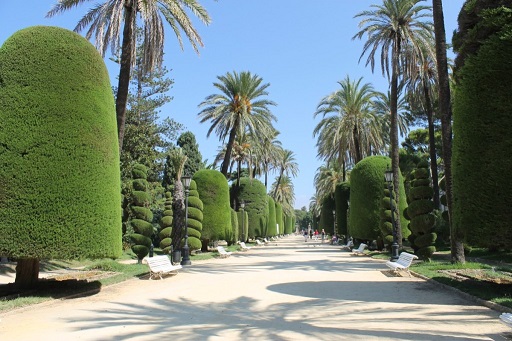
Genovés Park
The Genovés Park is the largest green area in the old town of Cádiz. The park borders the Parador Nacional Atlántico, with the Santa Bárbara promenade, with Duque de Nájera avenue, and with González Tablas street, in which the main entrance is located. At, you can find more than 100 different tree and shrub species, many of them belonging to species that do not currently exist in other parks or gardens. Among its characteristics, highlights the Grotto, a lake with a waterfall where ducks and geese coexist.
Direction: Avda. Dr. Gómez Ulla s / n
Schedule: Monday to Sunday from 8.00 a 18.30 h.
Phone: 956 241 001

Cádiz Museum
It was built on the confiscated land of the Convent of San Francisco, in the XIX century. The building is the work of Juan Daura, inaugurated in 1838 neoclassical style. It has three sections: Archeology, Fine Arts and Ethnography, and among its outstanding collections are finds from the Roman period, or the baroque painting rooms with works by artists such as Zurbarán, Alonso Cano or Murillo,
Direction: Plaza de Mina s / n
Schedule: Tuesday to Sunday from 9.00 a 21.00 h.
Phone: 856 105 023
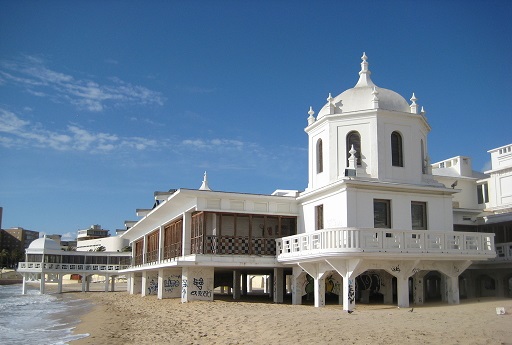
Spa of Nuestra Señora de la Palma and del Real
La Caleta beach is located in the historic center of the city of Cádiz, constitutes the longest beach, and it was a natural port where Phoenician and Roman ships anchored. In this same area, there is the building of Balneario de Nuestra Señora de la Palma and del Real, built in the 1920s. It was inaugurated in 1926, and replaced the traditional Baños del Real.
Direction: Av.. Duque de Nájera 3
Schedule: visits upon request, consult by phone *
Phone: 956 203 394
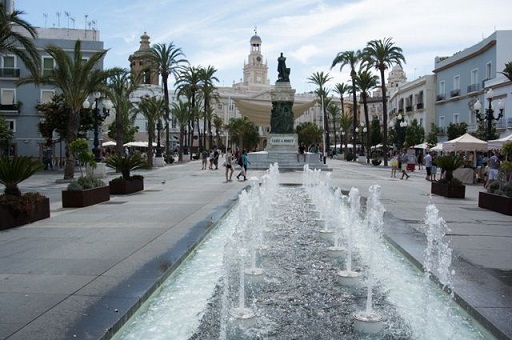
San Juan de Dios Square
Interesting buildings such as the Town Hall stand out in this square, the church of San Juan de Dios and the Casa de los Pazos Miranda. In addition, through the last remodeling of the square carried out in 2012, the pedestrianization of the space was completed and new ornamental elements were added. Among them, the monument to the Cádiz politician Segismundo Moret stands out, recovered for this place that it already occupied when it was inaugurated in 1909.
Direction: San Juan de Dios Square
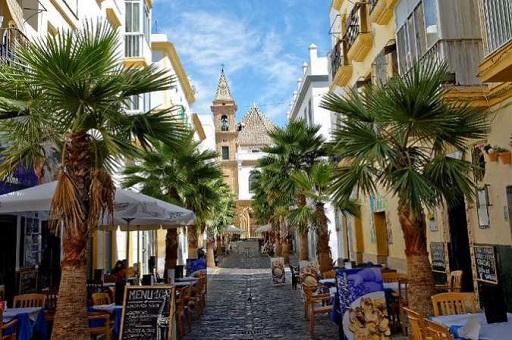
Viña neighborhood
La Viña is a simple and traditional neighborhood of fishermen. Andalusian taverns and tapas bars serve grilled razor clams, Fine and local sherry in a bustling atmosphere. The carnival is lived with intensity every year in its picturesque squares, like that of Tío de la Tiza, and in the alleys full of colorful houses. The Mora tree, a centenary ficus, gives shade to a small garden that communicates with the beach of La Caleta.
Direction: Viña neighborhood
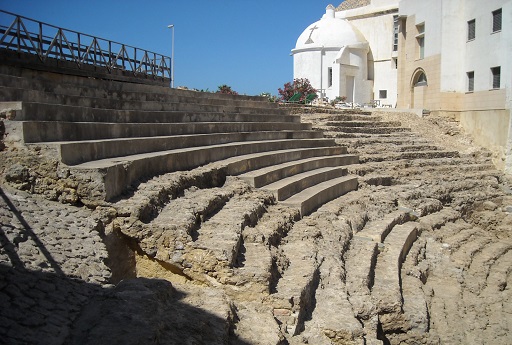
Roman Theater of Cádiz
This theater was discovered in the year 1980, in some archaeological excavations destined to locate the Castle of the Villa. It currently has an interpretation center that can be accessed from Calle Mesón, and in which you can see the different areas of the theater, like the stage, the orchestra or the stands, through dug wells. Theater, also known as Gades Theater, being very old, preserves many characteristics of Greek theaters, although with adaptations made by the Romans.
Direction: Mesón street 11-13
Schedule: Monday to Saturday from 10.00 a 16.30 h and Sundays of 10.00 a 14.00 h.
Phone: 677 982 945
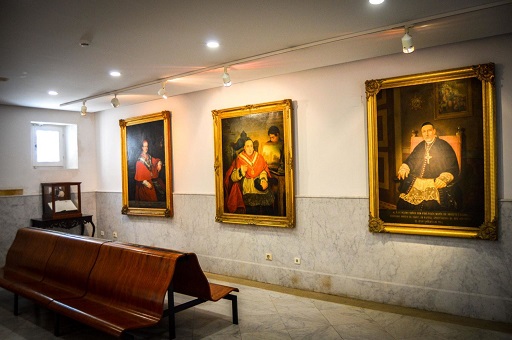
Cathedral Museum - Accounting House
This museum is located inside the Casa de Contaduría, In the Plaza Fray Felix and inside the ornaments and objects of worship of the Cathedral of Cádiz are exposed, as well as paintings and sculptures. Stands out from your treasure, the third richest in Spain; the Custody of the Million, named for the amount of precious stones that decorate it.In the Patio of the House of Termineli you can visit the new Romantic Room, where samples of religious painting from the 19th century are exhibited. And finally, The Mudejar Patio, a space with filtered light.
Direction: Fray Felix Square 1D
Schedule: Monday to Saturday from 10.00 a 15.00 h.
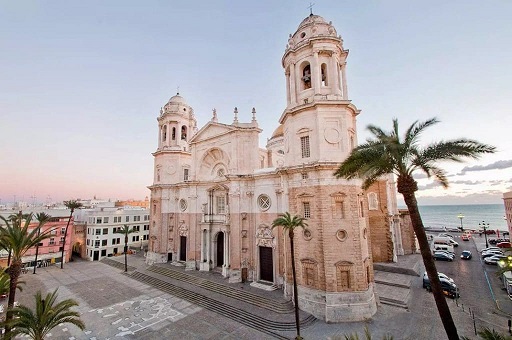
Cathedral Square
Cadiz Cathedral Square, It is a large urban space that is located in the heart of the historic and traditional center of this town. Located in its southern area, very close to the Mar del Vendaval that bathes the entire seafront that is known here as “The South Field”, the Cathedral square opens right in front of the old medieval city wall, from which its access door still persists, or Arch of the Rose. There are several streets that converge in this square: the passage Arco de la Rosa, Pelota street and Cobos street, on the east side; and company street, Magistral Cabrera street and Architect Acero street, on its west side.
Direction: Cathedral Square

Cádiz City Council
The current City Hall of Cádiz was built in 1799 on the bases and location of the previous Town Halls and is the result of two stages: the first, neoclassical, started in 1799 by Torcuato Benjumeda, and a second corresponding to the Elizabethan style, work of García del Álamo in 1861 and that would affect the interiors. In 1936 the flag of Andalusia is raised for the first time.
Direction: Plaza de San Juan de Dios s / n
Schedule: check schedule by phone *
Phone: 956 241 000
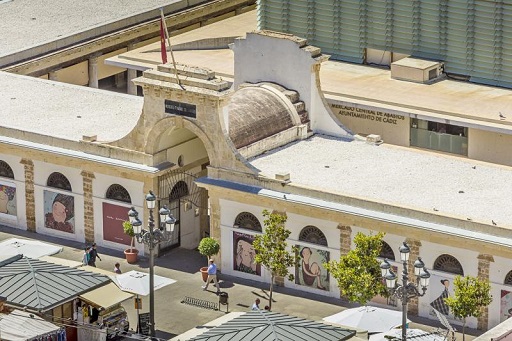
Central Market of Abastos
The Central Market project was the work of Torcuato Benjumea, a neoclassical quadrilateral located on the old site of the kitchen garden of the Descalzos convent, known today as the Plaza de la Libertad. This was inaugurated in 1838, and currently has 57 fruit and vegetable stands, 54 of fish and shellfish, 44 of meats, 7 from overseas, 4 bread and pastry, 1 of olives, 1 of bags and paper, 1 of fishing items, and a cafeteria located on the first floor. In addition, every day of the week it hosts the Gastronomic Corner, place where you can taste products from both Cadiz cuisine, as well as national and international.
Direction: Libertad Square s / n
Schedule: Monday to Saturday from 9.00 a 15.00 h.
Rincón Gastronómico
Monday: Of 09.00 h. a 16.00 h
From Tuesday to Friday: of 09.00 h. a 15.30 h. and of 19.00 h. a 00.00 h
Saturday: Of 09.00 h. a 16.00 h. and of 20.00 h. a 01.00 h
Phone: 956 220 860
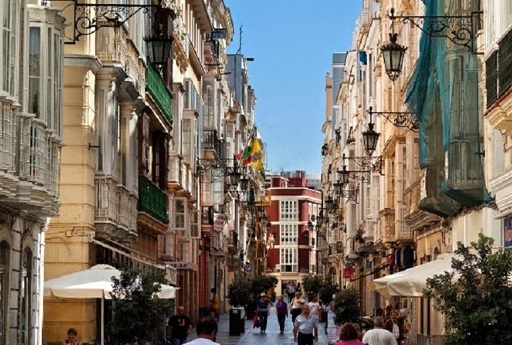
Calle Ancha
Ancha street in Cádiz is located in the heart of the historic center of this city. It begins in the Plaza de San Antonio and ends, in a south-east direction, at the meeting between Ninth and José del Toro streets.
Direction: Ancha street
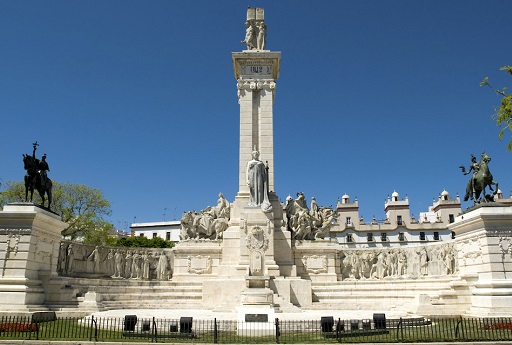
Monument to the Constitution of 1812
The monument to the Constitution of 1812, commemorates the centenary of the Constitution of 1812, and it is located in the Cadiz Plaza de España. It is also known as the Monument of the Courts and it was a project carried out in 1912, work of Modesto López Otero, as an architect, and Aniceto Marinas, as a sculptor. Contains various allegories of the War, peace, Agriculture and Industry, along with reliefs alluding to the Cadiz resistance during the War of Independence.
Direction: Plaza de España s / n
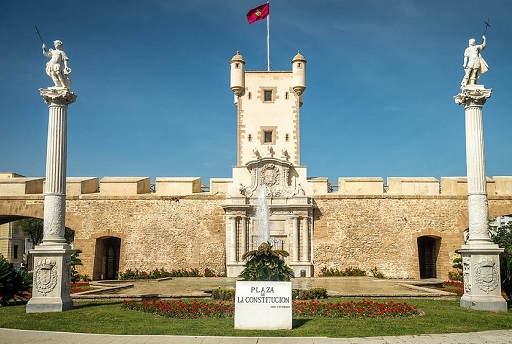
Puertas de Tierra
The Land Gate, It is a stronghold of what was the entrance wall to the city of Cádiz, built in the 18th century by Torcuato Cayón. The cover is carved in marble and is conceived more as a religious altarpiece, that as a military fortress. It is one of the most significant monuments of the city, that currently separates the Old Town and the modern area of the city. The interior of the walls admits visits, you can check the schedule below.
Direction: Constitution Square s / n
Schedule: Tuesday to Sunday from 9.30 a 15.00 h and from 17.30 a 20.30 h.
Phone: 956 241 001
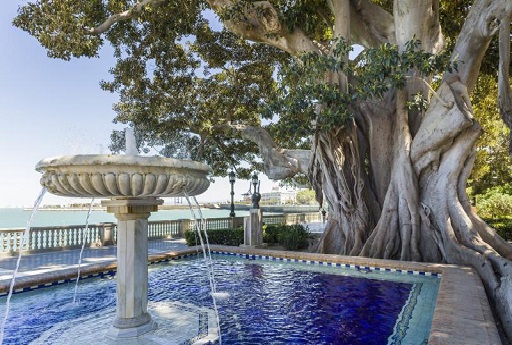
Alameda Apodaca
It is a landscaped walkway located in the historic center of Cádiz, parallel to the sea and the city wall. Start at the walls of San Carlos, and ends between the Baluarte de la Candelaria and the Iglesia del Carmen. Its design is currently in the regionalist style, and it took place between 1926 Y 1927, by the architect Juan Talavera y Heredia.
The Alameda is included within the Gardens of Cultural Interest located in Cádiz that were included in the General Catalog of Andalusian Historical Heritage in 2004.
Direction: Alameda Apodaca s/n
Phone: 956 241 001
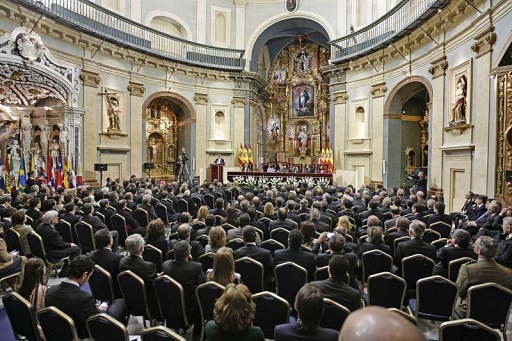
San Felipe Neri Oratory
This oratory is a building located in the center of Cádiz, Baroque style was built between 1685 Y 1719, and in it the first Spanish constitution was written, the Constitution of 1812. Its main altarpiece includes an Immaculate Conception, considered one of the best works of Murillo, and abroad, the tombstones commemorate the centenary of the Cortes de Cádiz.
Direction: San Felipe Neri Oratory
Schedule:
Tuesday to Friday from 10.30 at 2:00 p.m. and from 16.30 at 20.00h, Saturdays from 10.30 at 14.00h, and Sundays of 10.00 at 1:00 p.m. - Mondays and holidays closed
Sundays at 13 hours mass in latin.
Phone: 662 642 233
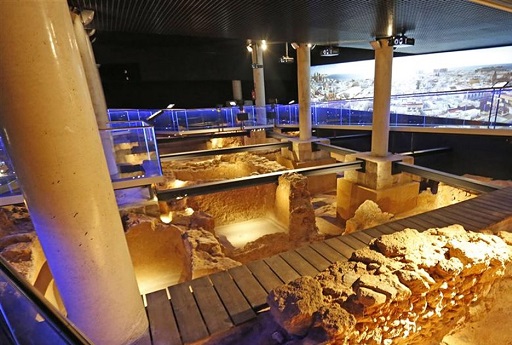
Gadir Archaeological Site
This site is located under what we now know as the Tía Norica Puppet Theater, nine meters deep. It is an archaeological museum that collects artifacts and exhibits on the Phoenician culture and civilization of Antiquity, about a few 3000 years ago.
Direction: San Miguel street 15
Schedule: Tuesday to Saturday from 11.00 a 13.00 h and from 16.00 a 19.00, Sundays from 11.00 a 13.00 h - Monday closed
Phone: 956 226 337
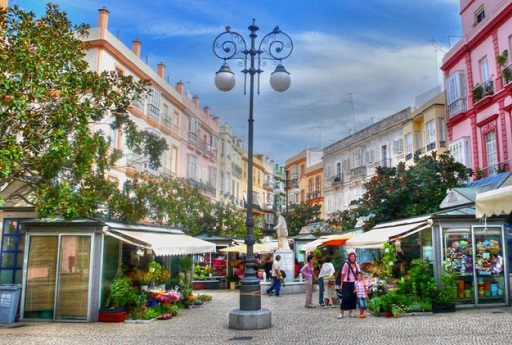
Flower Square
This is one of the most emblematic public spaces in the city, it is located in the heart of the historic center, and traditional from Cádiz, a few meters from its lively Food Market. It is presided over in its widest area by the silhouette of the Post Office building, a construction that combines red bricks and white walls, and dates from the years next to 1930. It is completely pedestrian, and it is usually very busy.
Direction: Flower Square
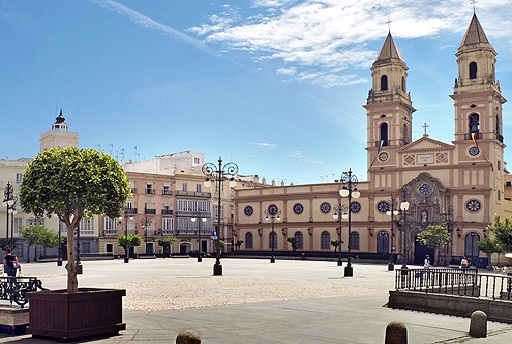
San Antonio Square
The Plaza de San Antonio has an area of 750 square meter, with a singular historical and monumental importance. At one time it was called "Campo de la Jara", larger than the current square. Between the buildings that delimit it, are the headquarters of the Casino Gaditano, built in the 18th century by the Marquis del Pedroso, baroque style, renovated in Elizabethan style in 1857. Its patio and interior rooms have a profuse neo-Mudejar decoration, made in 1890 by the Sevillian artist Adolfo López Rodríguez. Or the headquarters of the old Banca Aramburu, with eighteenth-century white marble cover, with stipes in the second body and whose facade was renovated in modernist style by Juan Cabrera Latorre in 1910.
Direction: San Antonio Square
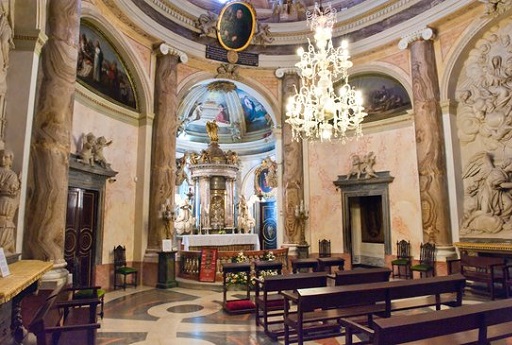
Oratory of la Santa Cueva
It was founded as an oratory for exercisers, It is from the 18th century and consists of two rooms, an upper or high chapel, of great luminosity, and another underground or low chapel, with a Calvary of Polychrome Wood. In the upper chapel you can see, among other outstanding works, three canvases by Goya: The Holy Supper, The Multiplication of the loaves and fishes, and The parable of the king's son's wedding.
Direction: Rosario street 10
Schedule: Tuesday to Friday from 10.30 at 2:00 p.m. and from 16.30 at 20.00h. Saturdays: 10.30-14.00h. Sundays of 10:00h a 13:00h. Monday and Holidays closed.
Phone: 956 222 262
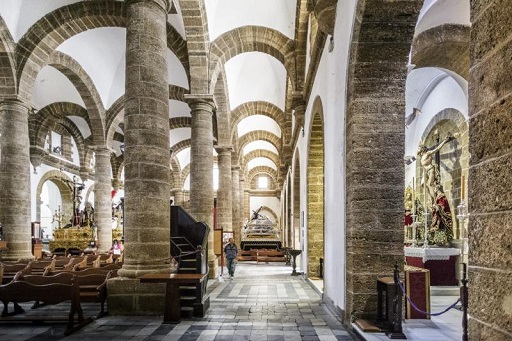
Church of Santa Cruz
The Old Cathedral of Cádiz, o Church of Santa Cruz, It is a construction dating from 1262-1263 and that was rebuilt in Mannerist and Baroque style in the 18th century. It is one of the most historic temples in the city and the tradition tells that it was built on the site of an old Muslim mosque.. It was built at the request of Alfonso X the Wise and was erected as a cathedral in 1263, expressing the Wise King his desire to be buried in it, although it was never fulfilled.
Direction: Fray Felix Square 6
Schedule: Tuesday to Saturday from 9.30 a 12.30 h and from 18.00 a 19.30 h – Holidays only for mass.
Phone: 956 287 704

Bridge of the Constitution of 1812
This bridge is cable-stayed and crosses the Bay of Cádiz, giving access to Cádiz from the mainland, being the third access of the city, after the bridge of San Fernando, and the Carranza bridge. It is a continuation of the South Highway, forming an integral part of the access highway to Cádiz. It began to be built in 2008, and it was opened in September 2015.
Direction: Constitution Bridge
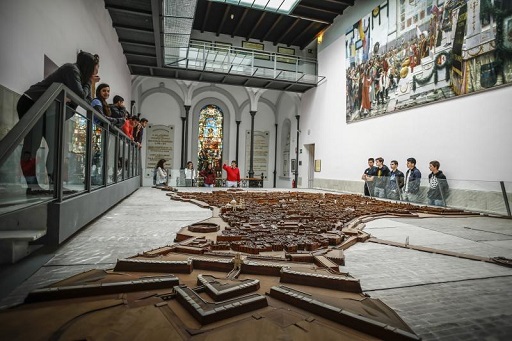
Museum of the Courts of Cádiz
The Museum of the Courts of Cádiz was born as a reference point for the initiatives carried out in the city to commemorate the First Centennial of the Constitution of 1812, the first in the history of Spain. The building was designed by the architect Juan Cabrera Latorre, who conceived a facade of neoclassical inspiration, and inside it houses the Iconographic and Historical Museum of the Cortes and Site of Cádiz, what is your full name, where objects from the 18th and 19th centuries are found, related for the most part to the siege of the city by Napoleonic troops between 1810 Y 1812 and with the promulgation of the Constitution of 1812.
Direction: Santa Inés street 9
Schedule: Tuesday to Friday from 9.00 a 18.00 h, Saturdays, Sundays and holidays of 9.00 a 14.00 h. - closed Monday
Phone: 956 221 788
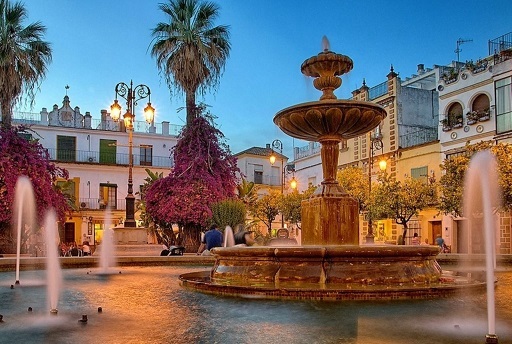
Historic Center of Cádiz
The historic center of the city of Cádiz is one of the most emblematic of Andalusia. It has numerous lookout towers, and the promenade allows a set of incredible views and sensations, as it surrounds the entire city without losing sight of the sea. The historic center is usually lively, and has a wide variety of bars, restaurants and cafes. Among its main streets, we highlight the Plaza de San Francisco, Ancha street, or Virgen de Palma street.
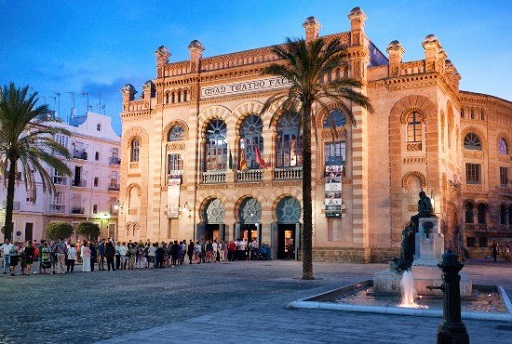
Falla Theater
Exterior of red brick and neo-Mudejar style and interior of great richness and color following the Spanish Arabic style.
The plans of its construction, Come in 1884 Y 1905, belong to Adolfo Morales, and the address to Juan Cabrera Latorre. Its construction was carried out on the ashes of the previous Great Theater.
The theater is shaped like a horseshoe to which the different floors adapt, the stalls and the stalls, the mezzanine of boxes, first floor with amphitheater and boxes and the upper tier popularly called “paraiso”. Each floor is surrounded by a gallery that connects with the stairs.
It is currently the headquarters of the famous group contest of the Cádiz Carnival, the Ibero-American Theater Festival and the Alcances de cine Contest, in addition to the different cultural manifestations that pass through the city.
Direction: Plaza Fragela s / n.

Church of San Juan de Dios
The Church of San Juan de Dios is attached to the Hospital of the same name, and is located in the heart of the old part of the city, in its primitive neighborhood of Pópulo.
The temple is located on the corner and presents a facade to the square that bears the same name, attached to the Town Hall building. It is an unusual example of a church with a Greek cross plan. The exterior is substantially renovated at the beginning of the 19th century. In it the tower stands out, performed by Torcuato Cayón in 1768, that rises at the confluence angle of the facades.
Direction: San Juan de Dios Square
Schedule: Check schedule by phone *
Phone: 956 287 452
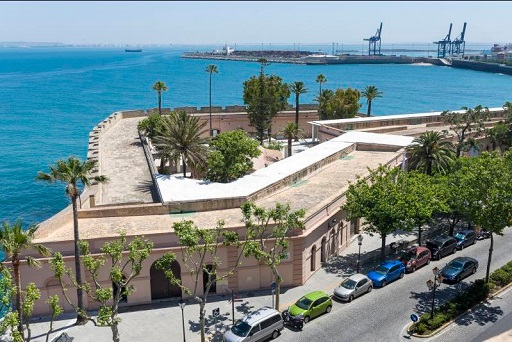
Baluarte of La Candelaria
The Baluarte de la Candelaria is a fortification of the Modern Age of Cádiz. It was constructed in 1672 taking advantage of a high point of land, on the initiative of the governor of the square, Diego Caballero of Illescas. It is protected by a strong wall that acts as a breakwater, and it was considered as the main access to the port. Has been barracks, master of engineers or even dovecote of the army service. It is currently used as a cultural space.
Direction: Paseo Alameda Marqués de Comillas 6
Schedule: Tuesday to Saturday from 10.00 a 14.00 h and from 18.00 a 21.00 h. - Sunday and Monday closed
Phone: 956 808 472
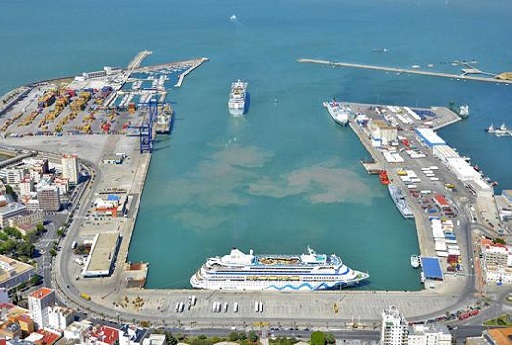
Port of the Bay of Cádiz
It is a port complex, located on the Spanish south Atlantic coast in Cádiz, and groups five ports in the Bay: Cadiz Pier, Cabezuela-Puerto Real Pier, Free Zone Pier (Cádiz) and El Puerto de Santa María Pier (Cádiz). All would be under the supervision of the Port Authority of the Bay of Cádiz.
Direction: Port of Cádiz

Paseo de Canalejas and Plaza de las Tortugas
This walk has an area of 8510 square meters of green area, and the Plaza de las Tortugas with 1.060 square meter. constitute a fragmented green area between the Palace of the Provincial Council and the San Juan de Dios Square, bounded to the east by the Port Avenue and the commercial port of the City and west by Avenue 4 from December to 1977, antigua Ramón de Carranza Avenue. The plant of the Paseo de Canalejas, more or less triangular in shape, has not experienced much variation in recent decades, Nevertheless, not so the design of its flowerbeds, as, building a Paseo de Canalejas forced a remodeling of the gardens, opting, by an irregular and sinuous distribution, in contrast to the previous, more symmetrical and rectilinear.
Direction: Paseo de Canalejas
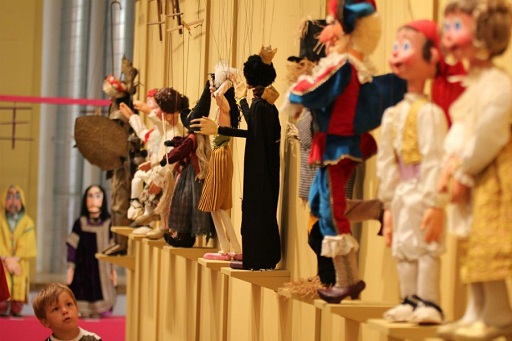
Puppet Museum
The Ibero-American Puppet Museum is a municipal space dedicated to the culture and history of the puppet, installed inside the vaults of Puerta de Tierra, in the Bay of Cádiz, inaugurated in August 2012. The outside, known as the old Patio de Tropas, it has become a garden area where puppet shows are held, also giving rise to the International Puppet Festival of the City of Cádiz.
Direction: Puertas de Tierra, Bóvedas de Santa Elena s/n street
Schedule: Tuesday to Friday from 10.00 a 19.00 h, Saturdays and Sundays of 10.00 a 15.00 h. - closed Monday
Phone: 956 276 846
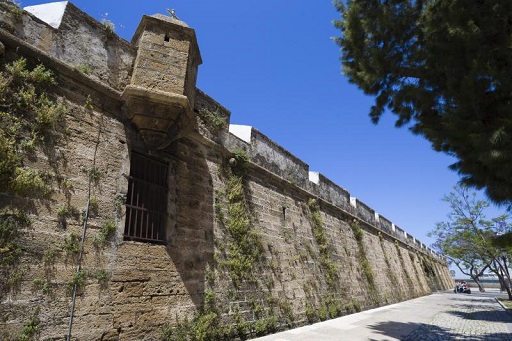
Walls of San Carlos
Between bastions and lookout towers, Cádiz barricaded himself behind the Walls of San Carlos. They are currently near the Plaza de España, next to the monument of the Constitution of 1812. The ramparts stare out to sea, and they were raised at the end of the 18th century, by the military engineer Antonio Hurtado.
Direction: Honduras street 6
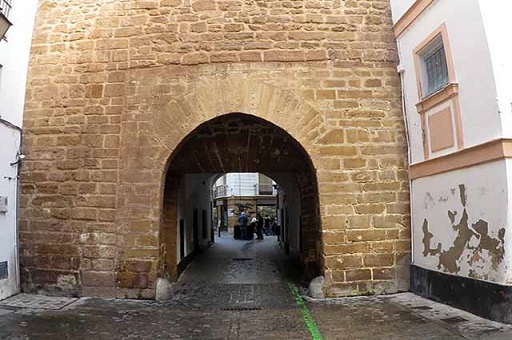
Pópulo Arch
This arch was also known as the primitive Puerta del Mar, since through it you accessed the port area. At the beginning of the 17th century, the chapel of Nuestra Señora del Pópulo was built in front of it., that has given it the appearance of a passageway that it currently presents. The characteristics of the interior facing coincide with the building techniques of the Islamic walls of the 10th and 11th centuries., while the arch is quite possible that it was originally horseshoe. The arrangement of its voussoirs allows it to be placed in the 12th century, in Almohad times.
Direction: Arco del pópulo street s / n
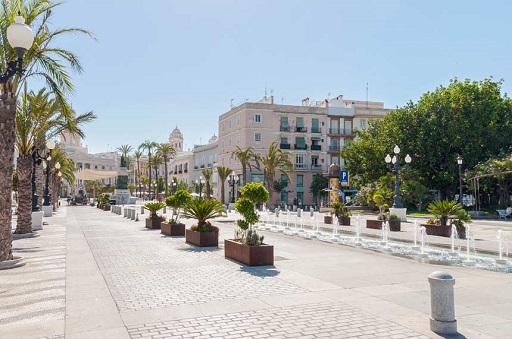
Pópulo neighborhood
El Pópulo is a neighborhood in the historic center of Cádiz, located in the north area, near the Atlantic between the neighborhoods of San Juan and Santa María. It is considered the oldest neighborhood in the city, and he finds the cathedral and the roman theater, occupying the medieval walled area. It receives this name as a consequence of a painting of the Virgin that was located in one of the gates of the wall., in the sixteenth century, to protect the city.
Direction: Barrio del Pópulo s/n
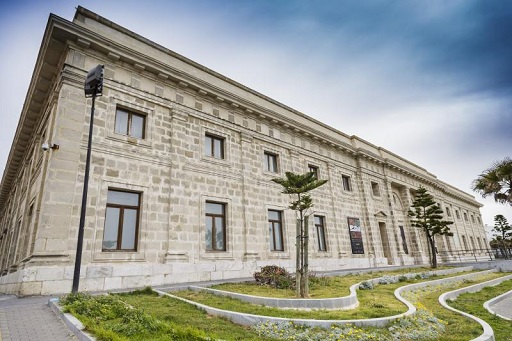
Casa de Iberoamérica of the Cádiz City Council
The Iberoamerican house was inaugurated in January 2011, and since then it houses the headquarters of the Cádiz Municipal Society and the Ibero-American Theater Festival (also known as FIT). The building was designed by one of the most important architects of the period, Torcuato Benjumeda, in 1794, although the work ended in 1836, and it has two floors and eight multidisciplinary rooms distributed around a central patio and two lateral ones.. It has undergone two major restorations throughout its history, the last and most important was in the year 2009, when the property had already stopped housing the city courts and was once again managed by the city council.
Direction: Concepción Arenal street s / n
Schedule: check schedules and tickets by phone *
Phone: 956 288 296